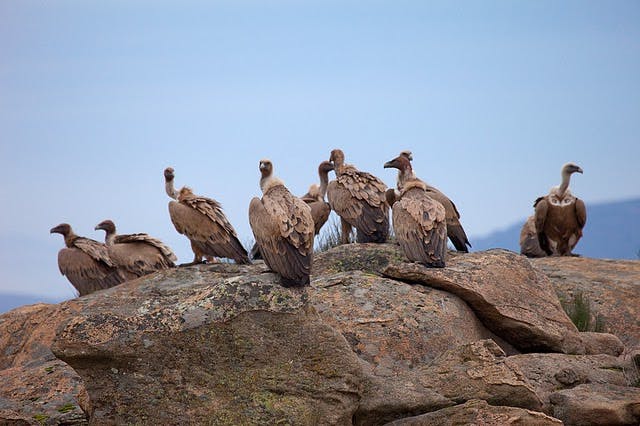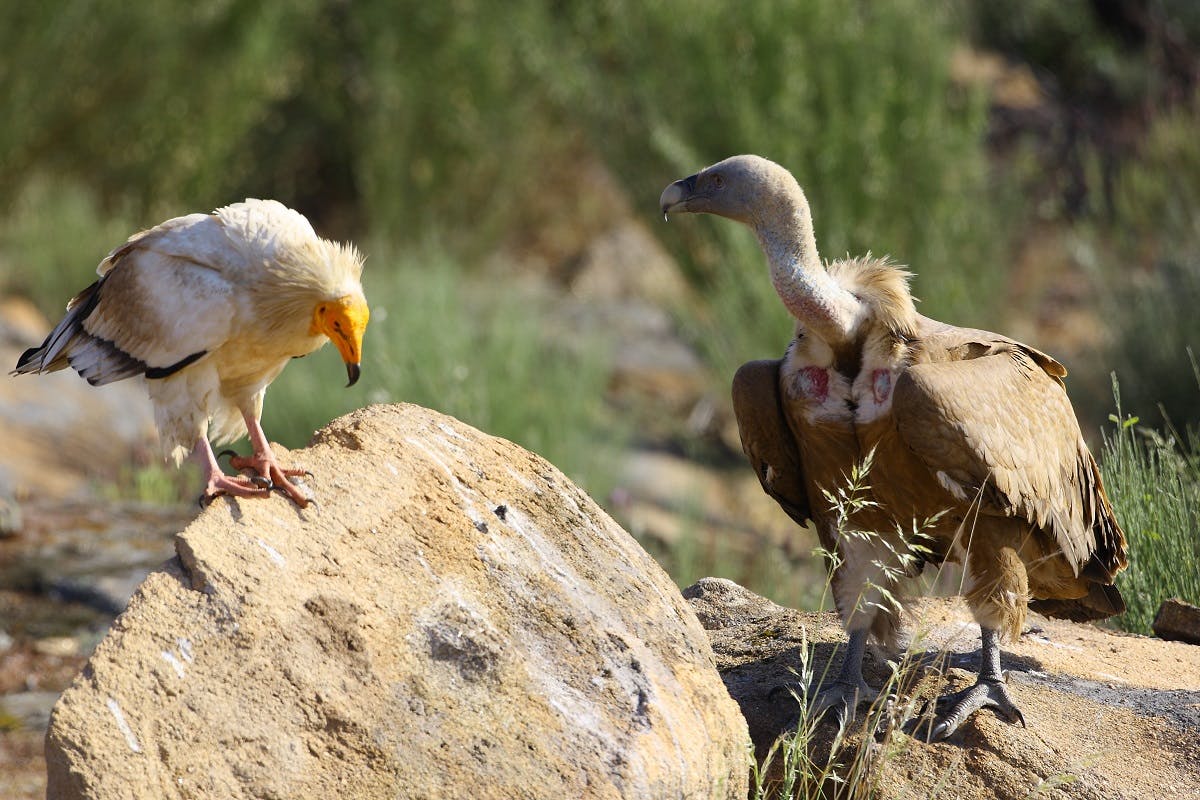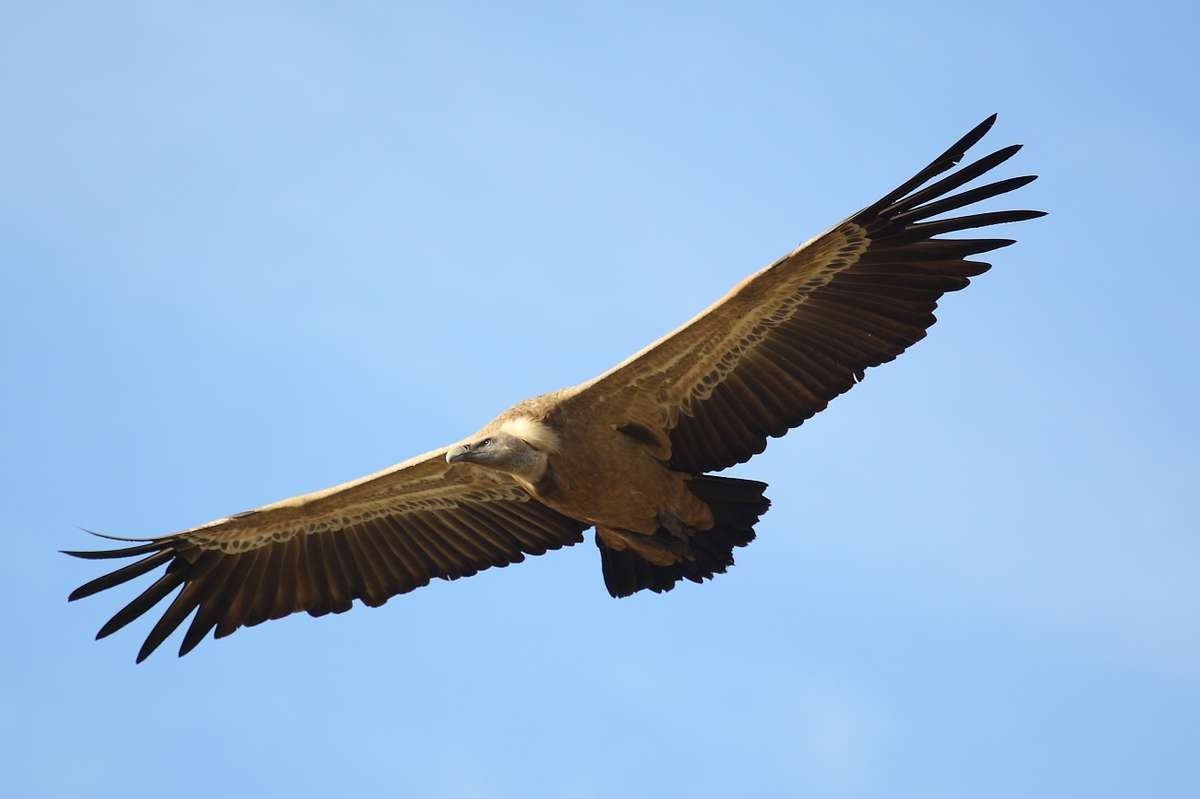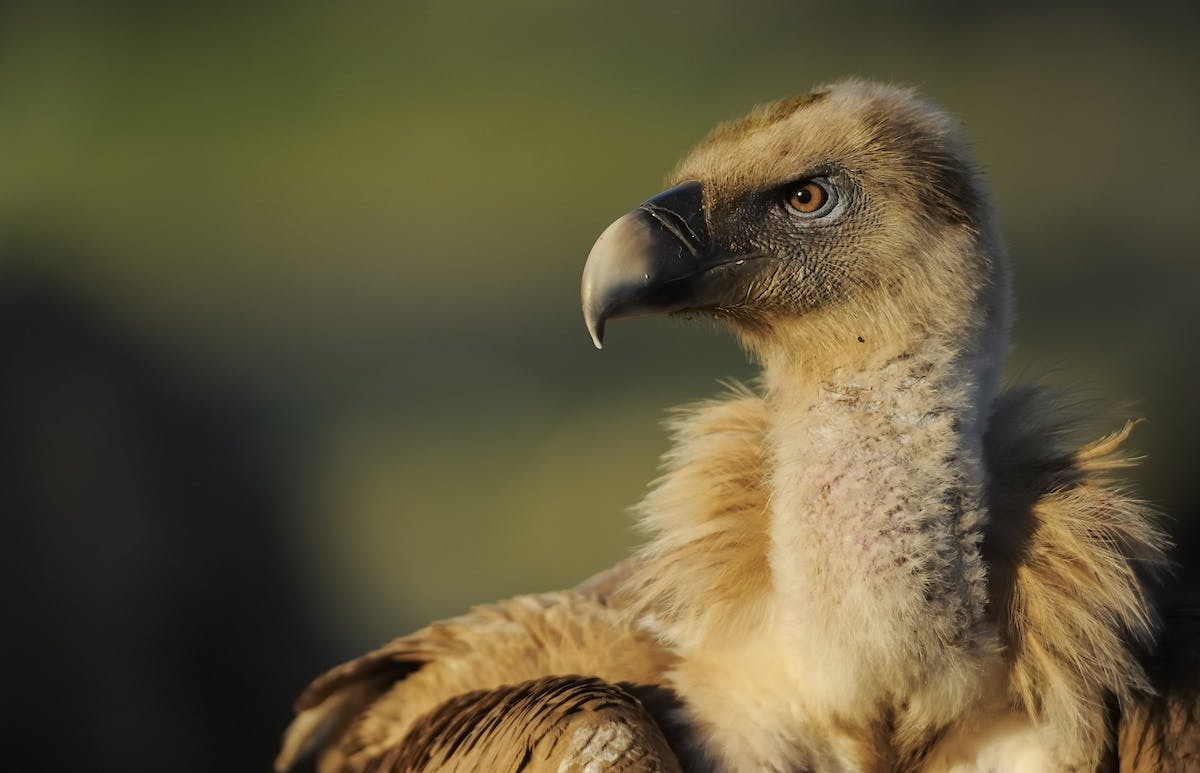One of the things we enjoy most about visiting our Wildfire Restoration & Rewilding project in Portugal, is the presence of Griffon vultures and black vultures circling overhead as we tree plant. Whether you call them a committee, vault or venue of vultures, these majestic raptors can be found soaring effortlessly in the thermal columns high above the Douro valley. This is their home, breeding ground and even migration point for the spectacular Egyptian vulture that come north each summer to nest.
The Douro Valley
The tall granite cliffs that surround our reforestation area in the Douro Valley are home to the medieval looking Griffon, the migrating Egyptian vultures and endangered Black vultures. They all scavenge on a range of food from mammal faeces, to insects in dung, carrion, small animals and vegetable matter. Having a forest and ecosystem in this area again will be crucial for their survival.
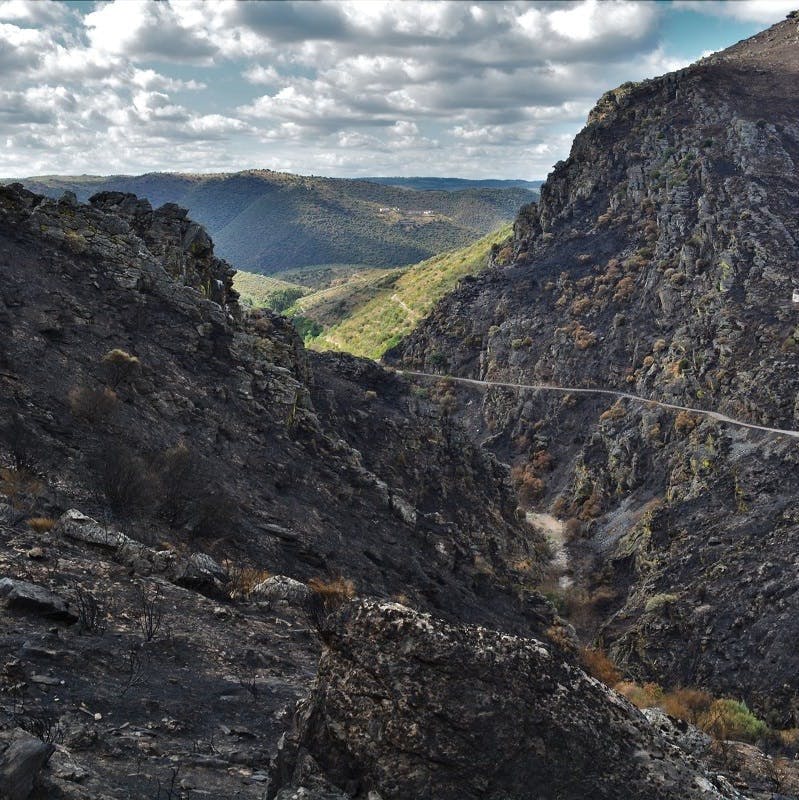
The Griffon Vulture
Тhe Griffon prefers to feed on the softer parts of carcasses, such as the muscles and viscera. Its long neck, allows it to reach far into a carcass without snagging. They are very social in comparison to other vulture species. They are mostly silent but make high-pitched mewing or hissing notes at the nest and screeching noises when squabbling at a carcass.
Did you know? A group of vultures feeding is called a wake, and that the leader of the committee will always eat first with wings spread wide. It is only when it lowers its wings that the other vultures may begin to eat.

The Egyptian Vulture
The Egyptian vulture, also known as the pharaoh’s chicken, is a comparatively smaller vulture. Its contrasting underwing pattern and wedge-shaped tail make it distinctive in flight as it soars in thermals during the warmer parts of the day. Egyptian vultures feed mainly on carrion but are opportunistic and so will prey on small mammals, birds, and reptiles. They also feed on the eggs of other birds, breaking larger ones by tossing a large pebble onto them.
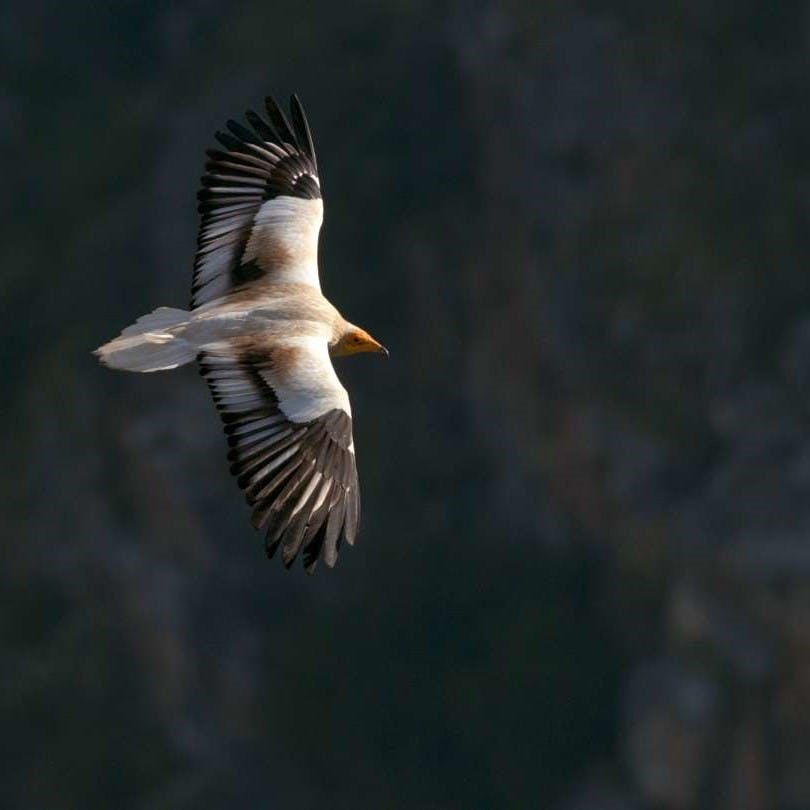

Take action now
Do you want to have a direct impact on climate change? Sir David Attenborough said the best thing we can do is to rewild the planet. So we run reforestation and rewilding programs across the globe to restore wild ecosystems and capture carbon.
Get involvedBlack Vulture
The Black vulture is one of the two largest vultures in the world, attaining a size of up to 14 kg in weight, 1.2 metres in height and boasting a whopping 3 metre wingspan. The Black vulture is distinctly dark, with the whole body being dark brown excepting the pale head in adults, which is covered in fine blackish down. It is a bird of hilly, mountainous areas, especially favouring dry semi-open habitats such as meadows at high altitudes. They are always associated with undisturbed, remote areas with limited human disturbance. In contrast to the Griffon, they are a solitary bird, largely being found alone or in pairs.
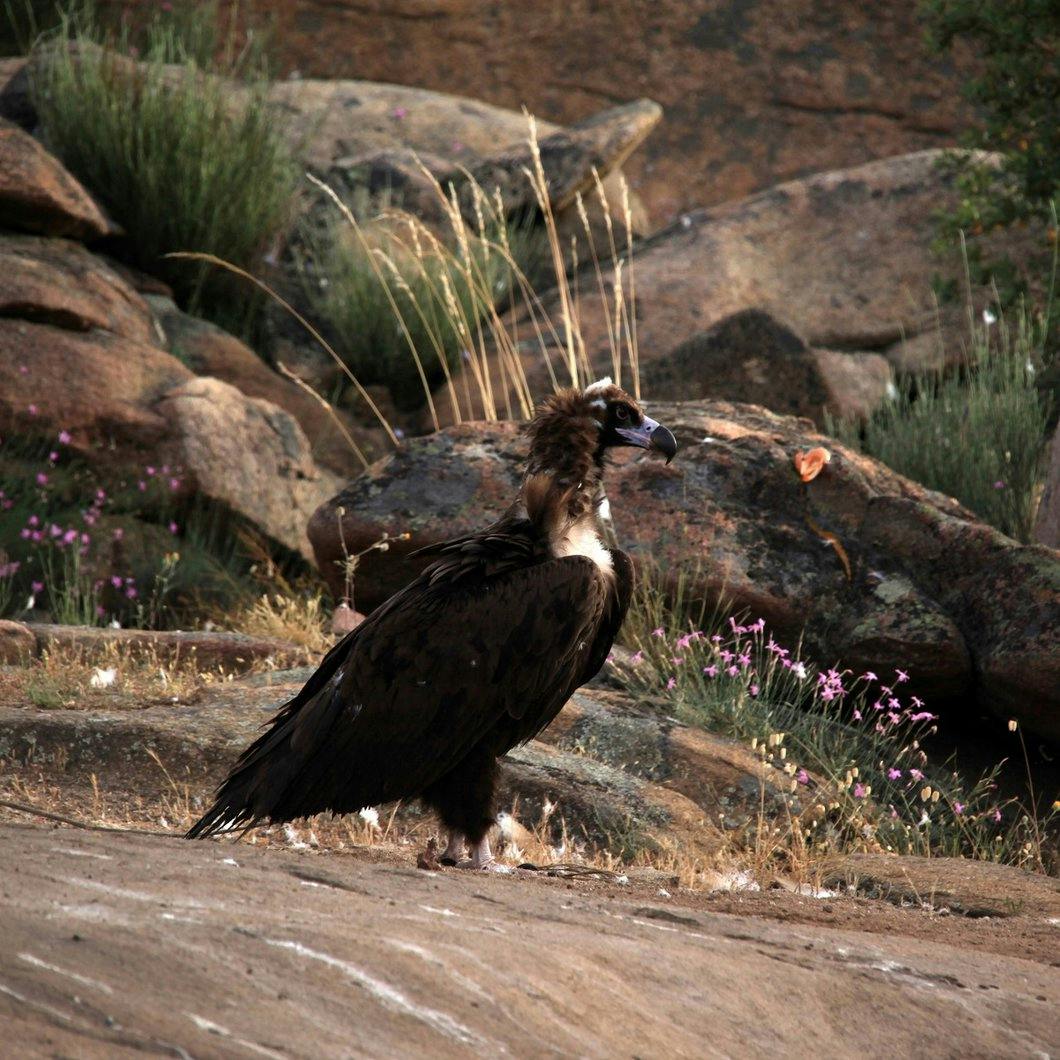
Conservation Status & Threats
Griffon vulture is classified as Least Concern, while the Black vulture is classified as Near Threatened (NT), on the IUCN Red List.
Threats
- Poisoning after illegal use of poison baits targeted at large carnivores (e.g. wolves, jackals) to protect livestock and game.
- Lead poisoning by hunting ammunition
- Reduced food availability
- Direct persecution
- Electrocution end collision caused by electric transfer networks
As many as 70% of vulture species worldwide are facing these issues and what makes them all the more serious is, if even a few endangered birds are killed, it can have catastrophic implications for the remaining population of the species. Numbers of direct persecution are low, especially when compared with how vultures were once persecuted but these issues still threaten the successful breeding of these birds and need to be addressed.
Perhaps the most serious threat to vultures in the Douro and indeed the world, is the mortality caused by lead ammunition and the use of illegal poisons. Lead poisoning occurs when the birds consume small fragments left in a shot animal. It is then absorbed into the vultures body and often leads to terrible suffering. The use of veterinary painkillers too, which may be in the carcasses of farm animals, are causing unintentional yet deadly poisonings. Thankfully, there is significant attention being put into reducing the risk of poisoning. One initiative is working with Portuguese police and specialised dogs to find poisoned animals or baits that vultures might feed on.
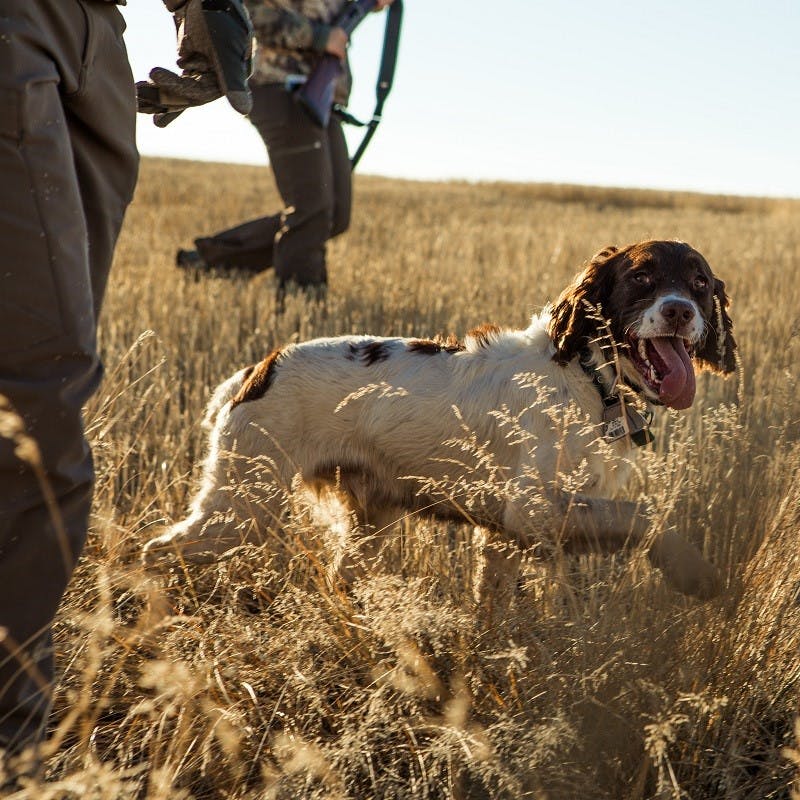
The Future of the Vultures
So what does the future hold for these birds and can they make a comeback to have stable populations? This is the goal and although there is hope, vultures are one of the most threatened bird species and many are still too close to extinction.
However, breeding pairs of vultures in general have been on the rise which is excellent news for conservation. In one programme, every one of their tracked Egyptian vultures returned from the arduous migratory journey back to Portugal for the breeding season, despite all the challenges and potential risks. In the last decade black vultures have also expanded their breeding range to the south of Portugal too, which again brings hope for the species.
The continuation of data collection is imperative for success going forward, as it will allow groups to monitor the species effectively and to aid their recovery. Great work is being carried out but must persevere and through concentrated action plans, continuous research as well as concerted efforts both domestically and internationally, there is real hope for these magnificent birds.
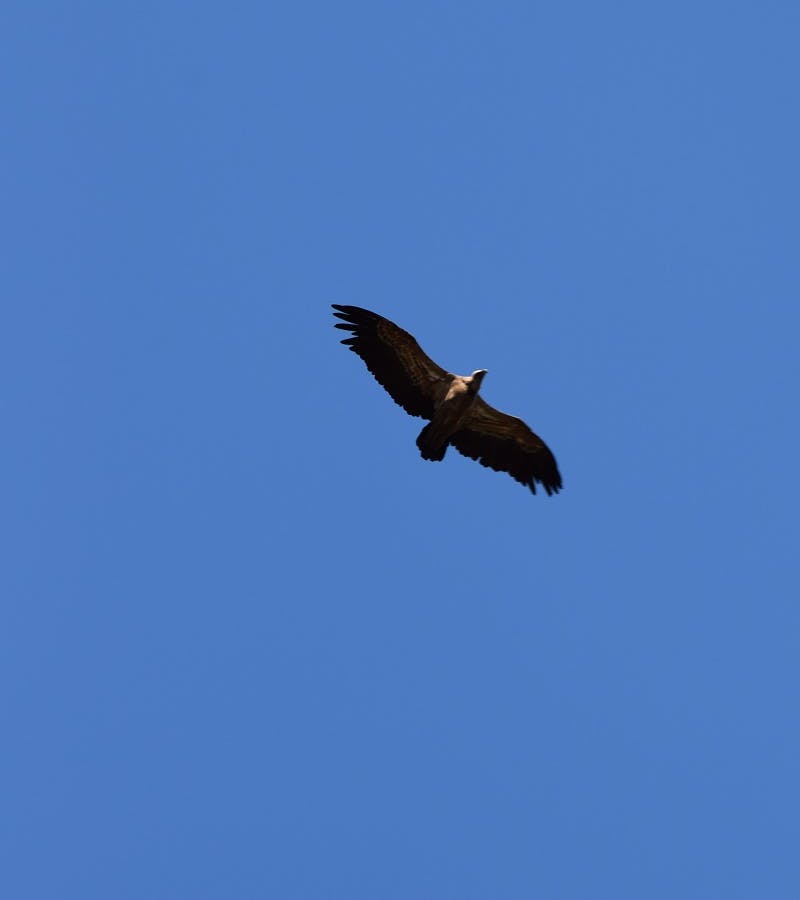
Rewilding Solutions
In the summer of 2019, our members funded the GPS tagging of griffon vultures in the Douro Valley in northern Portugal. Since then we have been supporting this vulture conservation intervention in collaboration with our partners at Rewilding Portugal. The detailed behavioural data acquired through this project is already providing answers to questions that before were only a matter of speculation.
Although the griffon vulture population in the Douro Valley has been monitored in the past, we could only guess where the vultures were foraging and what they were feeding on. This is where our vulture conservation project comes in by sponsoring the GPS devices required to track the movement patterns of griffon vultures.
These solar powered devices transmit precise geographical information without the need to recapture the individuals and have built in accelerometers that provide additional information about the way in which the vulture is moving at a given moment in time. This data can be used to determine when the vulture is resting, flying or foraging.
Moreover, this data can be used to identify the time and location of likely feeding events. By going to the field and looking for signs of feeding (such as carcass remains and vulture feathers), these feeding events can be confirmed and we can obtain information about what the vultures were feeding on, which in turn aids future vulture conservation efforts.
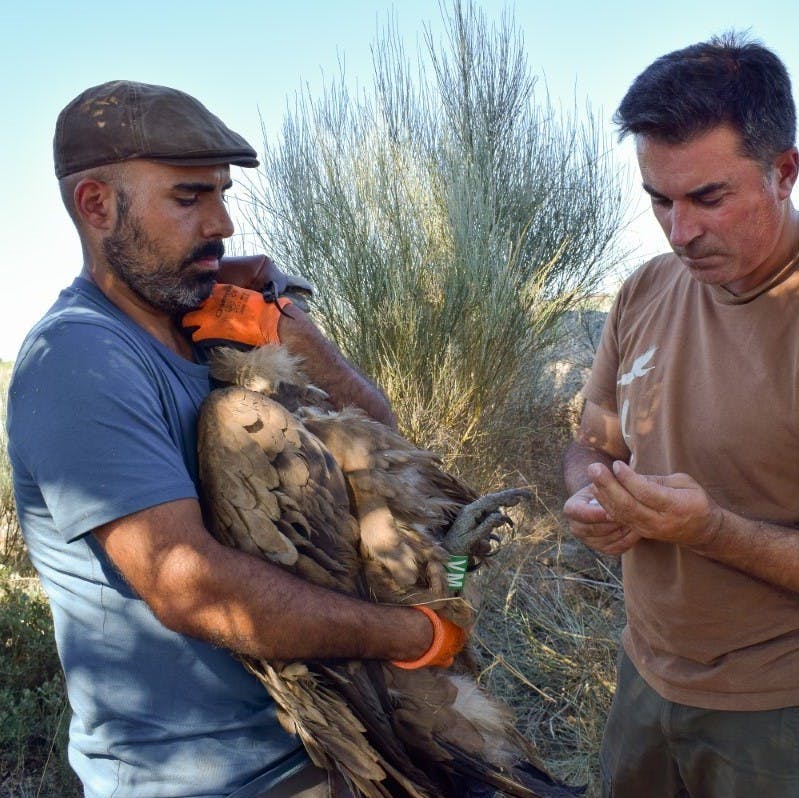

Vultures
In the Douro Valley, Portugal
Glossary of terms
Anthropogenic: This pertains to a human influence, mostly in relation to pollution or environmental damage. We will often hear of the natural world being influenced by anthropogenic factors which are as a direct result of human activity.
Breeding Population: Although the actual population of a species might be greater, the breeding population refers specifically to the members who are able to interbreed amongst themselves. For many animals this might take several years to reach this stage. It is used by conservationists to establish population trends in a species.
IUCN Red List: The International Union for Conservation of Nature. They are a global monitoring body, comprised of governmental, and non-governmental members. They are tasked with monitoring the state of wildlife and conducts environmental research worldwide.
Thermals: Rising air currents which are harnessed by, in this case vultures but indeed any bird to gain height. They are caused from slight rises in temperature from the earth and form these rising columns of warm air pushing upwards.
Sources & further reading

- “Vultures Galore in the Douro” - Vultures Conservation Foundation
- “Birdwatching Route – Douro Valley Valley” - Douro Valley

